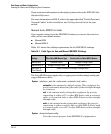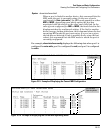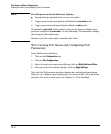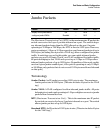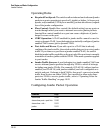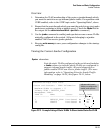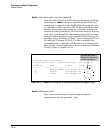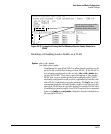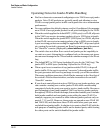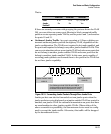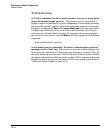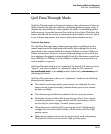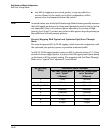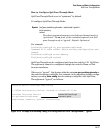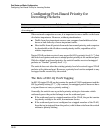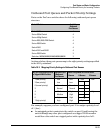
10-22
Port Status and Basic Configuration
Jumbo Packets
Operating Notes for Jumbo Traffic-Handling
■ ProCurve does not recommend configuring a voice VLAN to accept jumbo
packets. Voice VLAN packets are typically small, and allowing a voice
VLAN to accept jumbo packet traffic can degrade the voice transmission
performance.
■ You can configure the default, primary, and/or (if configured) the manage-
ment VLAN to accept jumbo packets on all ports belonging to the VLAN.
■ When the switch applies the default MTU (1522-bytes) to a VLAN, all ports
in the VLAN can receive incoming packets of up to 1522 bytes in length.
When the switch applies the jumbo MTU (9220 bytes) to a VLAN, all ports
in that VLAN can receive incoming packets of up to 9220 bytes in length.
A port receiving packets exceeding the applicable MTU drops such pack-
ets, causing the switch to generate an Event Log message and increment
the “Giant Rx” counter (displayed by show interfaces < port-list >).
■ The switch does not allow flow control and jumbo packet capability to
co-exist on a port. Attempting to configure both on the same port gener-
ates an error message in the CLI and sends a similar message to the Event
Log.
■ The default MTU is 1522 bytes (including 4 bytes for the VLAN tag). The
jumbo MTU is 9220 bytes (including 4 bytes for the VLAN tag).
■ When a port is not a member of any jumbo-enabled VLAN, it drops all
jumbo traffic. If the port is receiving “excessive” inbound jumbo traffic,
the port generates an Event Log message to notify you of this condition.
This same condition generates a Fault-Finder message in the Alert log of
the switch’s Web browser interface, and also increments the switch’s
“Giant Rx” counter.
■ If you do not want all ports in a given VLAN to accept jumbo packets, you
can consider creating one or more jumbo VLANs with a membership
comprised of only the ports you want to receive jumbo traffic. Because a
port belonging to one jumbo-enabled VLAN can receive jumbo packets
through any VLAN to which it belongs, this method enables you to include
both jumbo-enabled and non-jumbo ports within the same VLAN. For
example, suppose you wanted to allow inbound jumbo packets only on
ports 6, 7, 12, and 13. However, these ports are spread across VLAN 100
and VLAN 200, and also share these VLANs with other ports you want
excluded from jumbo traffic. A solution is to create a third VLAN with the
sole purpose of enabling jumbo traffic on the desired ports, while leaving
the other ports on the switch disabled for jumbo traffic.



